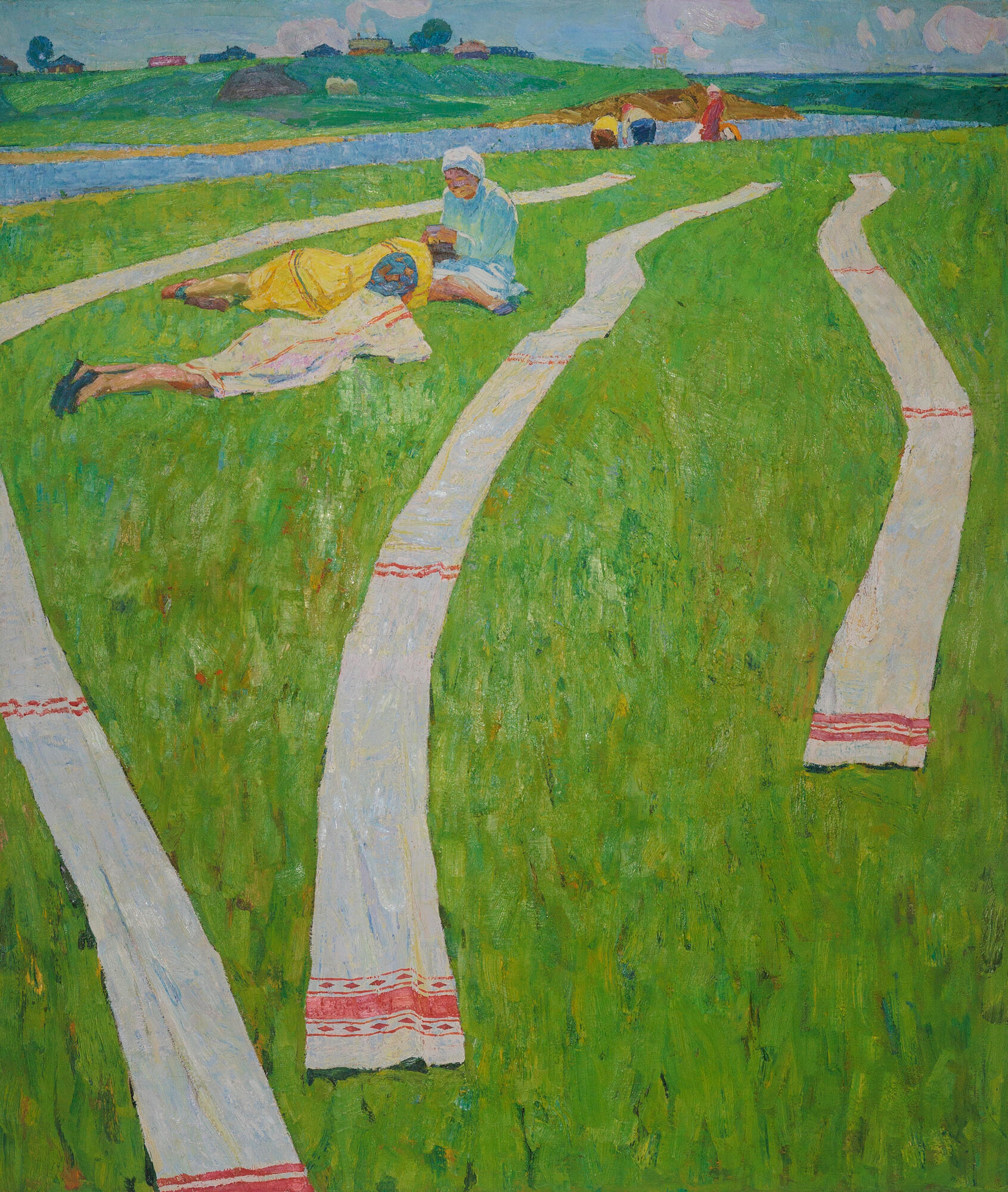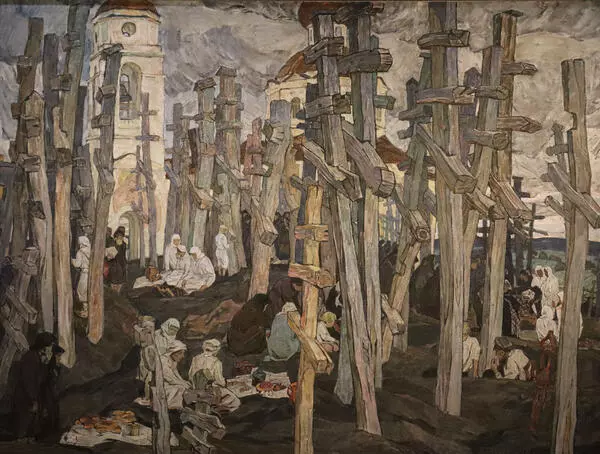Honored Artist of the Russian Federation Viktor Andreevich Bednov (1938–2013) worked in the genres of thematic painting, landscape, portrait, and still life. He graduated from the Penza Art School named after K. A. Savitsky. Member of the Union of Artists of the USSR since 1965, Viktor Bednov was head of the Mordovian branch of the Union at different times. His works are at the Penza Picture Gallery, the Art Fund of the Russian Federation, the Mordovian Republican Museum of Fine Arts, the Kostroma Regional Museum and many other museums. He is the laureate of the Silver Prize of the Russian Academy of Arts, participant of regional, inter-regional, and all-Union exhibitions, and his name is listed in the encyclopedic reference book “The Best People of Russia”.
The main theme of Viktor Bednov is land and people. It comes to the fore in the genre of thematic paintings. In the large-scale piece “Bleaching Linen” the artist focuses on the life of Mordovian villages, the customs of the people. The artist used the scene he had seen in his home village of Kochelayevo. The painting reproduces a traditional occupation of country women of the past — bleaching pieces of linen woven over the winter in the spring sun. At the top of the hill, a few Moksha women — representatives of one of the Mordovian ethnic groups — are peacefully talking, having spread out long pieces of linen on the grass. Woven linen is originally gray; it turns white after being steamed in lye and exposed to the sun for several days.
The painting “Bleaching Linen” shows how the artist explores the possibility of conveying space. Loose patches of color of the linen pieces stand out against the backdrop of a river meadow. The open space with its lush fresh greenery and the long pieces of cloth stretching toward the village at the top of the hill form roads that symbolize the earthly path. The artist creates a high horizon line to enhance this effect.
The bright grass, still fresh with dew, adds a special vibrancy to the scene. The horizontal lines of the background accentuate the serenity prevailing in the scene itself. The artist applies perceptual perspective, making the interpretation of space more complex in order to give greater magnitude to the subject. The canvas is remarkable for its daring and lush color scheme in an unpretentious natural landscape, as well as for its extraordinarily lyrical and richly expressive atmosphere.
Bednov’s work is most closely connected with rural life. Reflecting the unity of man, nature and labor, it is enhanced by the national dimension.
The main theme of Viktor Bednov is land and people. It comes to the fore in the genre of thematic paintings. In the large-scale piece “Bleaching Linen” the artist focuses on the life of Mordovian villages, the customs of the people. The artist used the scene he had seen in his home village of Kochelayevo. The painting reproduces a traditional occupation of country women of the past — bleaching pieces of linen woven over the winter in the spring sun. At the top of the hill, a few Moksha women — representatives of one of the Mordovian ethnic groups — are peacefully talking, having spread out long pieces of linen on the grass. Woven linen is originally gray; it turns white after being steamed in lye and exposed to the sun for several days.
The painting “Bleaching Linen” shows how the artist explores the possibility of conveying space. Loose patches of color of the linen pieces stand out against the backdrop of a river meadow. The open space with its lush fresh greenery and the long pieces of cloth stretching toward the village at the top of the hill form roads that symbolize the earthly path. The artist creates a high horizon line to enhance this effect.
The bright grass, still fresh with dew, adds a special vibrancy to the scene. The horizontal lines of the background accentuate the serenity prevailing in the scene itself. The artist applies perceptual perspective, making the interpretation of space more complex in order to give greater magnitude to the subject. The canvas is remarkable for its daring and lush color scheme in an unpretentious natural landscape, as well as for its extraordinarily lyrical and richly expressive atmosphere.
Bednov’s work is most closely connected with rural life. Reflecting the unity of man, nature and labor, it is enhanced by the national dimension.





